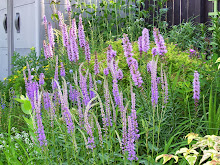
I need Spring.
The picture above was taken last year, just ten days from now. The ice was gone from the Mill Pond, The maples already in bloom. The ground was workable. With 80 degree temperatures the maple syrup harvest was over before it began. The we had a very cold April and cherries, apricots, and apples froze. No crop at all. The first picking of strawberries, too was a loss. Last summer was not a particularly sweet one.
Still, I would like some warm days. With rainy weather versus snow, especially as 56% of the United States is still in drought. Feed lots across the country have a cow shortage. There is horse in the beef products and up to a 1/3 of the fish are not what is labeled.
Dear sister-in-law (SIL), mother of Baby Boo, or Baby Gardener as I typically call him in Summer, says. "Buy local! Horse meat and mislabeled fish is what you get when you don't know your supplier."
We plot and plan in passing moments as we prepare food from the garden for the Family Game Night. The menu is fajitas with seasonings straight from the freezer and pantry shelf lined with the salsa canned in September. Made with the tomatoes that so fascinated Boo when he realized they float as we washed them, bobbing red balls in the sink full of warm water.
The call is for more fruit. We will add more blueberries, rejuvenate a bed of strawberries. SIL wants cranberries. Cranberries will freeze well and she has a rhubarb cranberry relish she likes. I think I have found a source. She also wants cilantro added. One of the Twins wants peaches. We are still discussing that one.
Also, one of the Twins wants tiny white pumpkins. I have found a variety called "Boo". How perfect!
The Twins and I have been germinating seed using the baggy method. It is spinach and it has sprouted. Their Poppa and they are also growing mold on some strawberries, blueberries, and other miscellaneous food stuffs. All tossed in a clear glass container on the kitchen counter. It is a trap for anyone unaware of its contents, but the Twins are fascinated with this no longer microscopic organism growing in their "Petri" dish.
I'll stick to seeds.
This is the garden division of labor; we decide together, and I produce the seed, typically from saving, and germinate and grow our transplants and source anything else that goes into the garden. We are trying to develop a local provenance to the seed as well. We wish we could grow oranges and bananas, too. I can well understand the English and their glass houses. The garden is on my brother and SIL's property. It is herbicide and pesticide-free.
We all plant and harvest. My brother does the majority of the watering. I do most of the weeding.
These are varieties that grow well in central Wisconsin.
This is what we grow:
Victoria rhubarb
Purple Passion asparagus
Autumn Bittern raspberries
Blackberries
Reliance seedless grapes
Concord grapes
Honeoye strawberries
Lapin cherries
Patten pears
Northland and Blueray blueberries
Mount Royal plums
Blue, Red Norland, Pontiac, and Yukon Gold potatoes
Kidney, contender,and Flambeau beans
Danvers, Yaya, carrots
Spaghetti squash
Crookneck summer squash
Straight Eight cucumbers
Aunt Molly cape gooseberries
Verde tomatilos
Yum, California Wonder, Planet Hybrid, sheepnose Pimento, and Margaret peppers
Olpaka, Celebrity, and Amana Orange tomatoes
Early Sunglow sweetcorn
some looseleaf salad blends
We grow just a few turnips, cabbage, and rutabagas. Last year, we did not grow parsnips, a mistake.

In about a week I will start peppers, followed by tomatoes. Right now, parsley and basil seeds are in baggies swelling and moving toward germination. I have had my lights set up and working rooting flowering bedding plant cuttings. Now I will move into my vegetables...
...with more snow in the forecast and Spring an illusive dream.







































